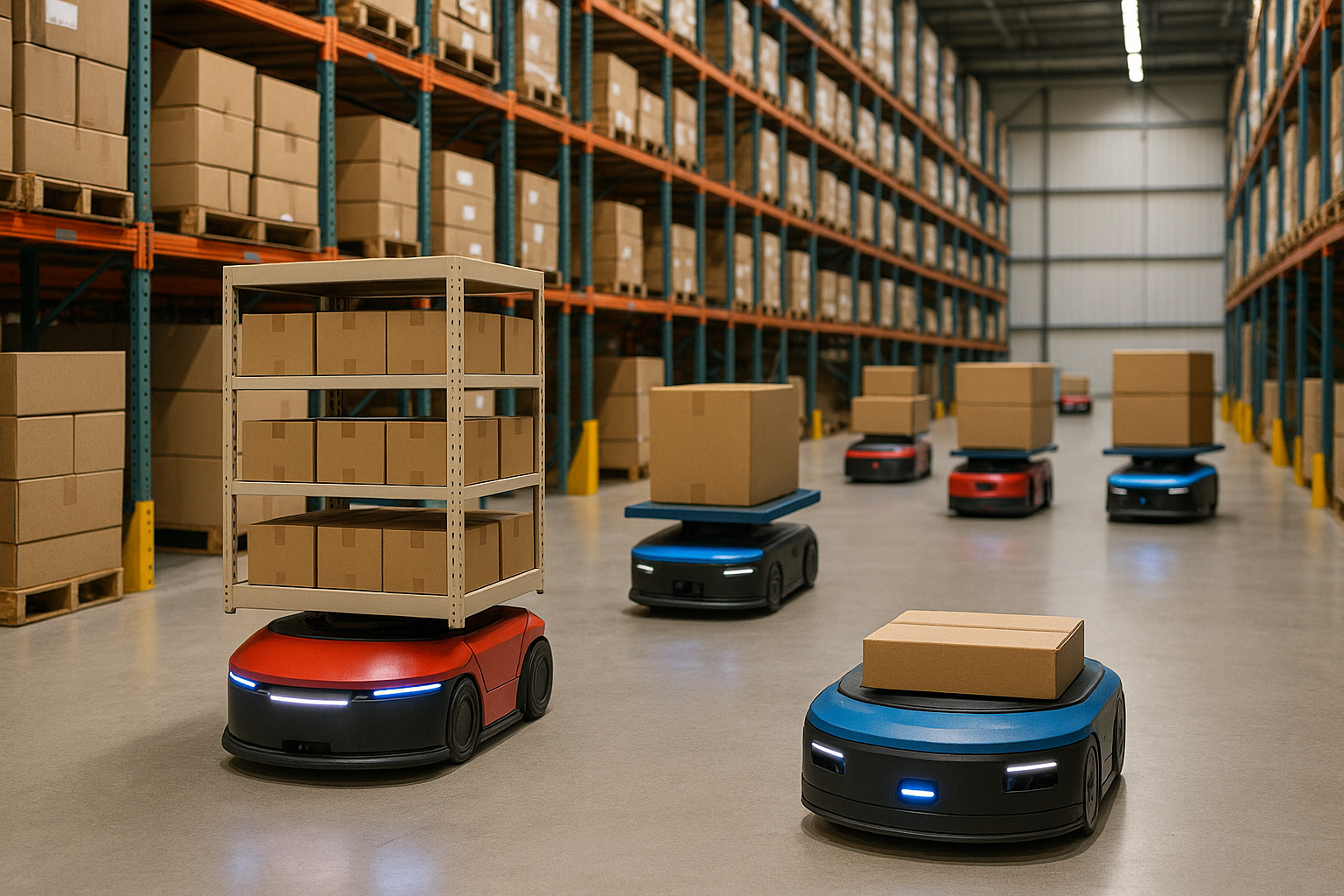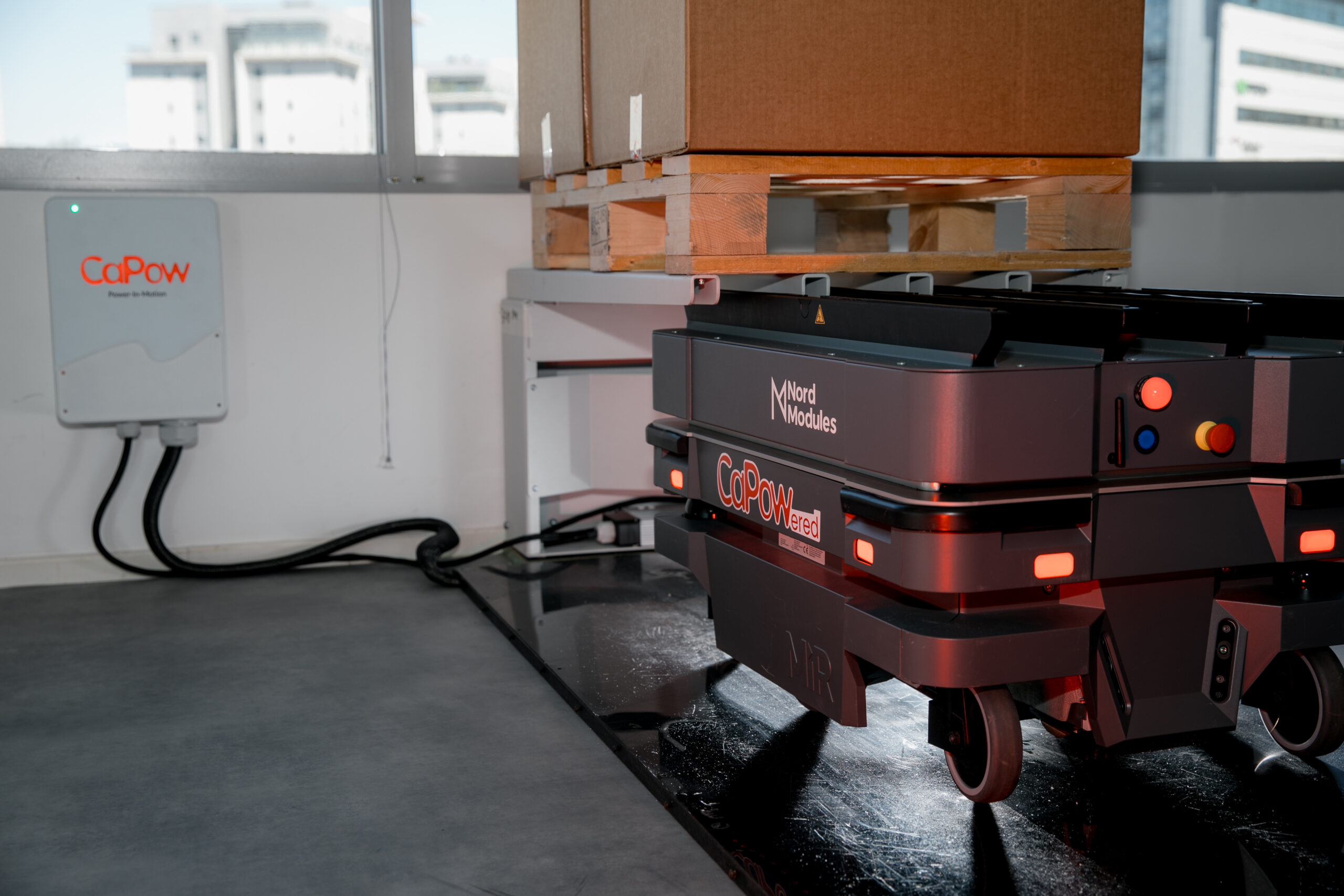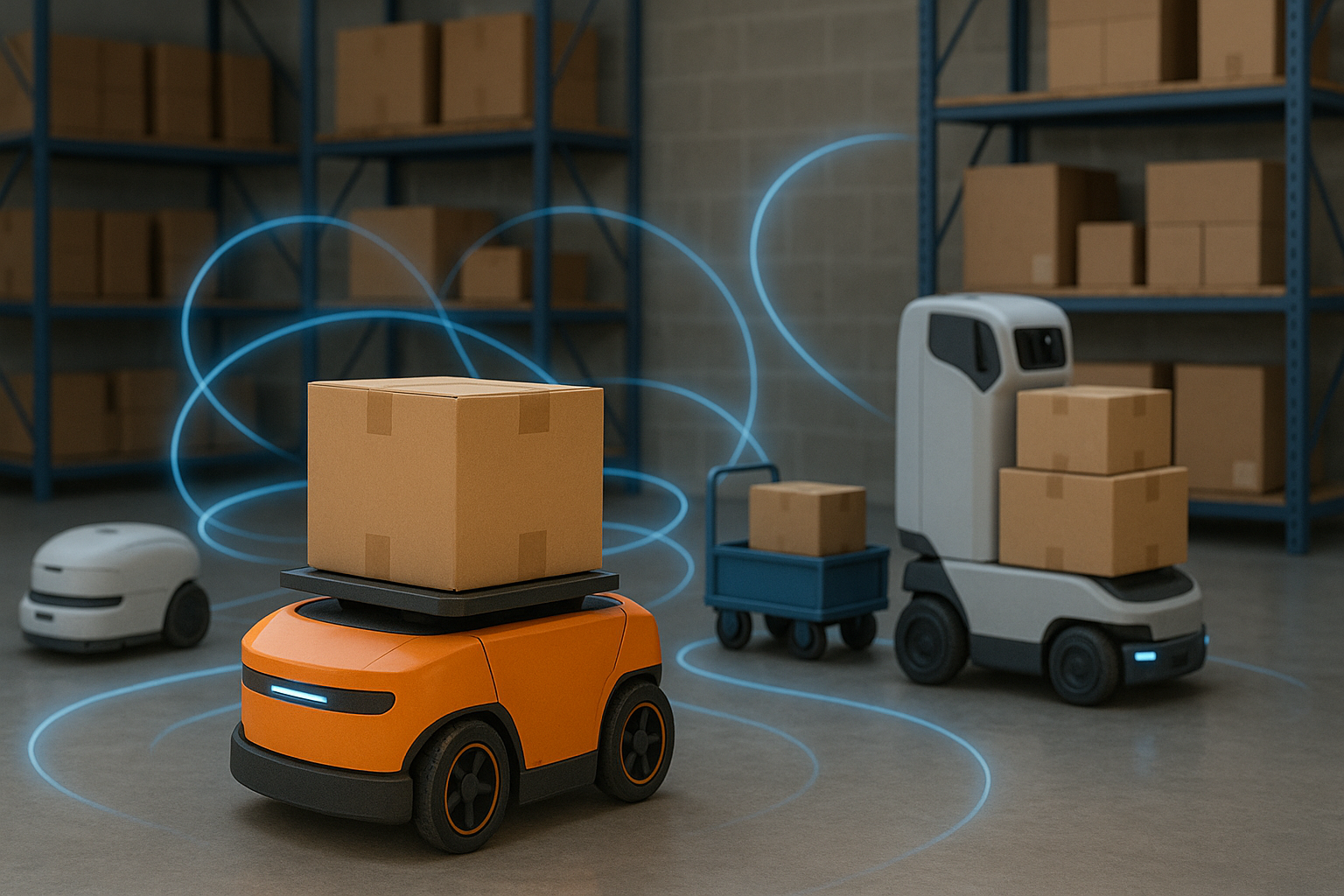In today’s fast-paced supply chain landscape, uptime is the baseline. As mobile robotics continue to redefine the warehouse floor, the spotlight is shifting toward the systems that support them. Nowhere is this more critical than in the way these robots are powered.
For operators and automation leaders, eliminating downtime is a strategic lever. From AGV and AMR fleets to fully integrated Goods-to-Person systems, modern automation thrives only when it stays in motion. In this post, we’ll explore forward-thinking strategies that industry leaders are using to push the limits of uptime and why in-motion energy delivery is a game changer.

1. The Hidden Cost of Charging Downtime
Traditional charging infrastructure for AGVs and AMRs introduces friction. Whether it’s designated charging docks, scheduled charging cycles, or human error (robots that forget to “plug in”), the model inherently creates idle time and forces oversized fleets to compensate.
In real-world settings, this adds up to:
- Lost throughput hours
- Wasted floor space
- Inflated CAPEX from redundant robots
- Added complexity for integrators and operators
Operators with just 10–20 mobile robots may lose dozens of hours per week to charging-related downtime. For high-throughput environments like automotive assembly lines or 24/7 fulfillment centers the impact is magnified.

2. From Reactive to Efficient: Power-in-Motion
Enter CaPow’s Power-in-Motion™ technology: a fully dynamic energy delivery platform that powers mobile robots while they move – without stopping.
Unlike inductive charging (which requires perfect alignment and still interrupts motion), CaPow’s capacitive-based Genesis system enables full-speed, in-motion energy transfer, ensuring robots stay productive throughout their operational route.
This unlocks two critical shifts:
- No more scheduled downtime
- Smaller, leaner fleets with higher ROI
As one U.S.-based tier 1 manufacturer reported, transitioning to CaPow’s Genesis system cut their operational losses by more than 50% and reduced total cost of ownership by 32%.

3. Smart Retrofitting: Faster Time to Value
One of the unique advantages of CaPow’s system is its retrofittable design. Instead of requiring new fleets, the Genesis platform integrates with existing AGVs and AMRs, in some cases even replacing traditional batteries with supercapacitor-powered modules that connect to CaPow’s modular floor-based antennas.
This means:
- No need to redesign or re-spec your robots
- Minimal disruption to current operations
- Go-live in under 1 workday (as seen with JLC Robotics)
In an industry where time-to-value is often measured in quarters, this offers a rare instant ROI.
4. Maximizing Energy ROI with GEMS
To manage power at scale, CaPow also offers GEMS (Genesis Energy Management System), a smart software layer that provides:
- Real-time fleet energy consumption data
- Predictive alerts for coverage gaps
- Power load balancing across zones
For facilities scaling from 10 to 100 robots, energy infrastructure becomes just as critical as Wi-Fi or WMS. GEMS ensures power is always where it’s needed, proactively, not reactively.
5. No More Charging Lanes = More Floor Space
Every square meter of your warehouse floor should contribute to throughput. Charging docks not only take up valuable real estate – they often require reserved access lanes, create bottlenecks, and interrupt optimal route planning.
With in-motion charging:
- Robots never leave their work zones
- No detours or “deadhead” trips to charging docks
- No congestion or queuing
For space-constrained facilities (especially in Europe and urban hubs), this is a significant competitive edge.
6. From Redundancy to Efficiency: Leaner Fleets
One of the unspoken costs in warehouse automation is fleet bloat: adding more robots than necessary just to account for downtime. In some facilities, up to 30% of the fleet is inactive at any given time due to charging, maintenance, or queueing.
CaPow’s partners have demonstrated that:
- Fleets can be reduced by 20-35%
- Robots work 24/7 without battery swaps or docking to charge
- Maintenance windows shrink thanks to increased battery lifespan
This leaner operation enables more predictable performance and smoother scaling.
7. The Path Forward: Energy as Infrastructure
Energy delivery in warehouses is undergoing a mindset shift. It’s no longer just about charging batteries – it’s about treating energy like a utility layer, always working in sync with the movement of goods.
By building infrastructure that prioritizes motion, not maintenance, operators can unlock:
- 100% uptime across shifts
- Higher throughput per robot
- Long-term ROI from both hardware and software
Final Thoughts
The future of warehouse automation is always on. And as the industry races toward 24/7 operations, leaders can no longer afford to treat charging as a background task. It must be part of the core uptime strategy.
With platforms like CaPow’s Genesis, the game has changed. Energy is no longer a constraint, it’s a catalyst for what comes next.
Want to see how in-motion power delivery works in real life?
Watch our latest webinar on-demand or Book a demo with our team.



